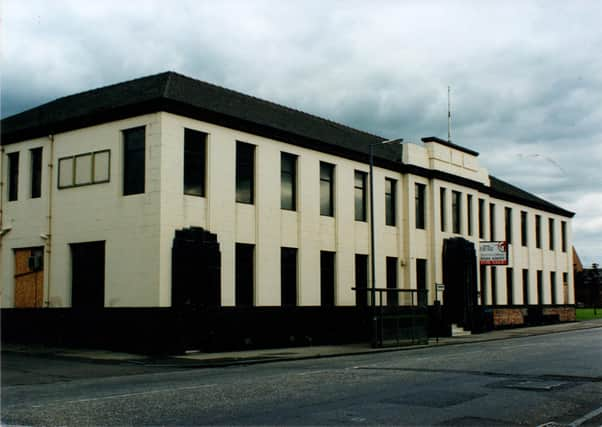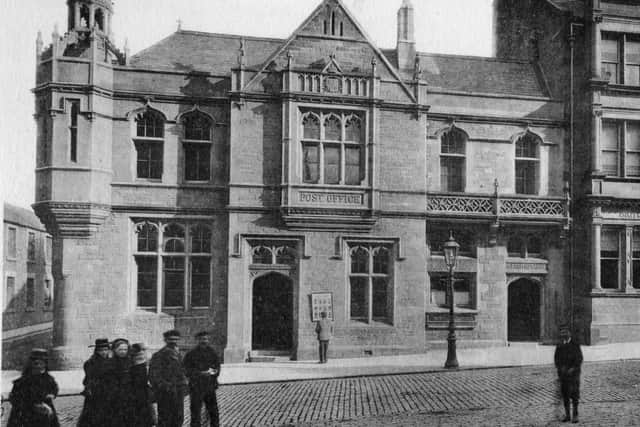From art deco offices to long-gone ice cream parlours on the last leg - Ian Scott


Crossing Dalderse Avenue brings us to another of Falkirk’s centres of iron founding. Turn right at the Star Inn, for years the haunt of folk club fanatics, and at the end of Gowan Avenue beside the canal you’ll find the bricked up remnants of Gowanbank Foundry. It was opened in 1870 by Malcolm Cockburn, Provost of the Burgh and all round important man of business. Nothing remains of the next door premises of Grahamston Iron Works known to all as ‘Mitchell’s foondry’. Back to the main road for a moment’s silent regret that Walton’s ice cream shop no longer sells the magic wafers and cones. For a while it was a photo studio but is now a carpet shop.
The Oddfellows Hall was built in 1883 for a Friendly Society and I wrote about it a few weeks ago. Grahamston was awash with foundries, churches and pubs. On the right is Grahamston United opened in 1875 and presently home to three other congregations whose buildings are long gone: the Methodist Church in James Street (1892), the Congregational in Meeks Road (1893) and Grahams Road Church (1879) whose thin spire dominates many of our old images of Grahams Road. The Victoria Bar (known as the Vicky) and the Graeme Hotel have survived but the Empire is gone and the old RB buffet once Baristas is now called Central Perk – whatever that means!
Advertisement
Hide AdAdvertisement
Hide AdWe may safely avoid the retail park roundabout and head on towards the bridge that carries the road over the railway line. Grahamston Station dates to the arrival of the railway in 1850 though the present buildings are from the 1980s. Up until the late Victorian period people used a footbridge here and wheeled vehicles were forced round the arc of Macfarlane Crescent. Few folk of my vintage will forget either McCready’s Chip Shop or the greyhound ‘Stadium’ which stood in the Crescent. Known of course as the ‘dugs’ this was an unregulated ‘flapper track’ where all manner of jiggery pokery went on. Suffice to say that many a hound was fed a few pies from McCready’s or a pail of cold water to make sure it didn’t run too fast! The Railway Bar on the bridge is a really interesting looking building and, amazingly, one that I have never been in!


Ahead of us on the left is the old Post Office, now the fantastic Hub, and over the road the former Burns’ Bar which has had many new names and today is called High Spirits. Like the trams we turn right into Newmarket Street passing on the corner the former Salon Picture House and the mock Tudor House. We are back where we started a month ago. It shouldn’t take you as long.
Comment Guidelines
National World encourages reader discussion on our stories. User feedback, insights and back-and-forth exchanges add a rich layer of context to reporting. Please review our Community Guidelines before commenting.